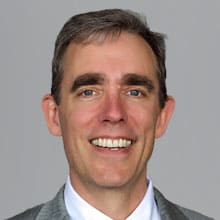Inside Angle
From 3M Health Information Systems
Tyranny of the urgent and addressing what matters: Using health risk assessments well
One premise of improving population health outcomes rests on the idea that we can be more pro-active in healthcare delivery. In addition to reacting to the “reason for visit” we take a broad look at what might get between a person and their optimal health outcomes. CMS backs this premise by paying for an Annual Wellness Visit (AWV). Because it helps to remind people about potential areas of risk, CMS requires the AWV include a Health Risk Assessment (HRA).
Time urgency, waits and delays are so frequent in medical practices that it is possible urgent issues like refilling medications, ordering tests, and admonitions to follow the treatment plan crowd out the opportunity to engage with patients in a way likely to encourage more healthy behavior change.
Busy healthcare professionals with the best of intentions can be ruled by the tyranny of urgent matters. The past of practice is itself overwhelming and the additional work engendered by well-intended quality reporting can create burnout.1 With this as the set-up, it is quite possible that the valuable insights provided by an HRA go unheeded.
A nice piece of qualitative research addresses this issue. Nagykaldi et al2 describe the quality of interaction between patients and physicians during AWV with an HRA. Their study “…suggests that HRAs introduced without proper framing, education, and additional resources may not allow patients and clinicians to leverage AWVs for effective health planning and improvement. A targeted, low-intensity intervention may help patients and clinicians improve the quality of HRA-guided health conversations during AWVs.”
Nagykaldi (et al) demonstrated the positive impact of brief interventions on the quality of interaction. As the authors note: In the context of a supportive program, good technology and brief interventions are likely to lead to behavior change and better outcomes.
An example: Iowa Medicaid offers an HRA in a program designed to encourage use by offering a discount on premium. Simple technology in a supportive program. Now providers in Iowa can look at Nagykaldi’s study and consider ways to use the HRA results to improve outcomes.
L. Gordon Moore, MD, is senior medical director for Populations and Payment Solutions at 3M Health Information Systems.
1 Ho, Lynn, and Jean Antonucci. “The Dissenter’s Viewpoint: There Has to Be a Better Way to Measure a Medical Home.” The Annals of Family Medicine 13, no. 3 (May 1, 2015): 269–72. doi:10.1370/afm.1783.
2 Nagykaldi, Zsolt J., Ami Dave, Connor J. Kristof, Tanya N. Watts, Sravanthi Utpala, and Elizabeth Wickersham. “Improving Patient-Clinician Conversations During Annual Wellness Visits.” The Journal of the American Board of Family Medicine 30, no. 2 (March 1, 2017): 161–69. doi:10.3122/jabfm.2017.02.160229.


